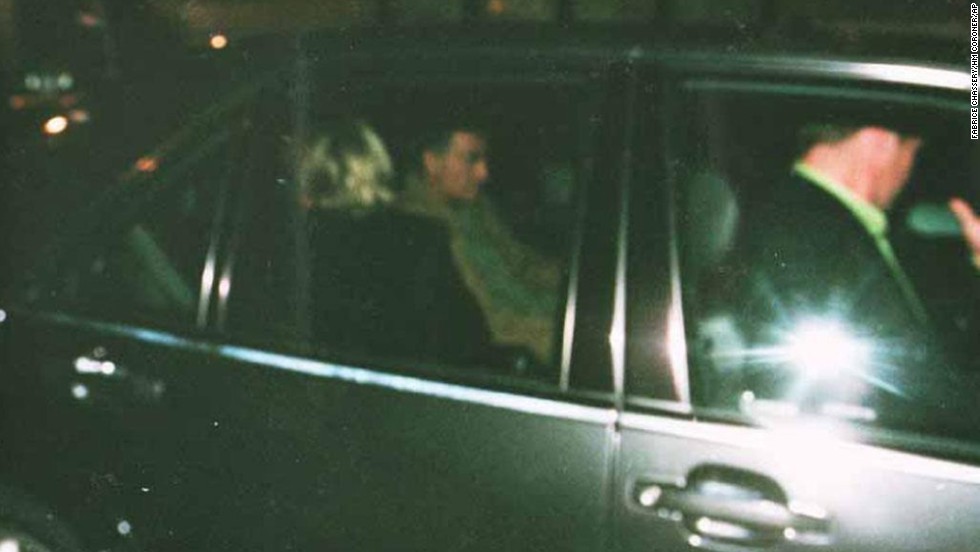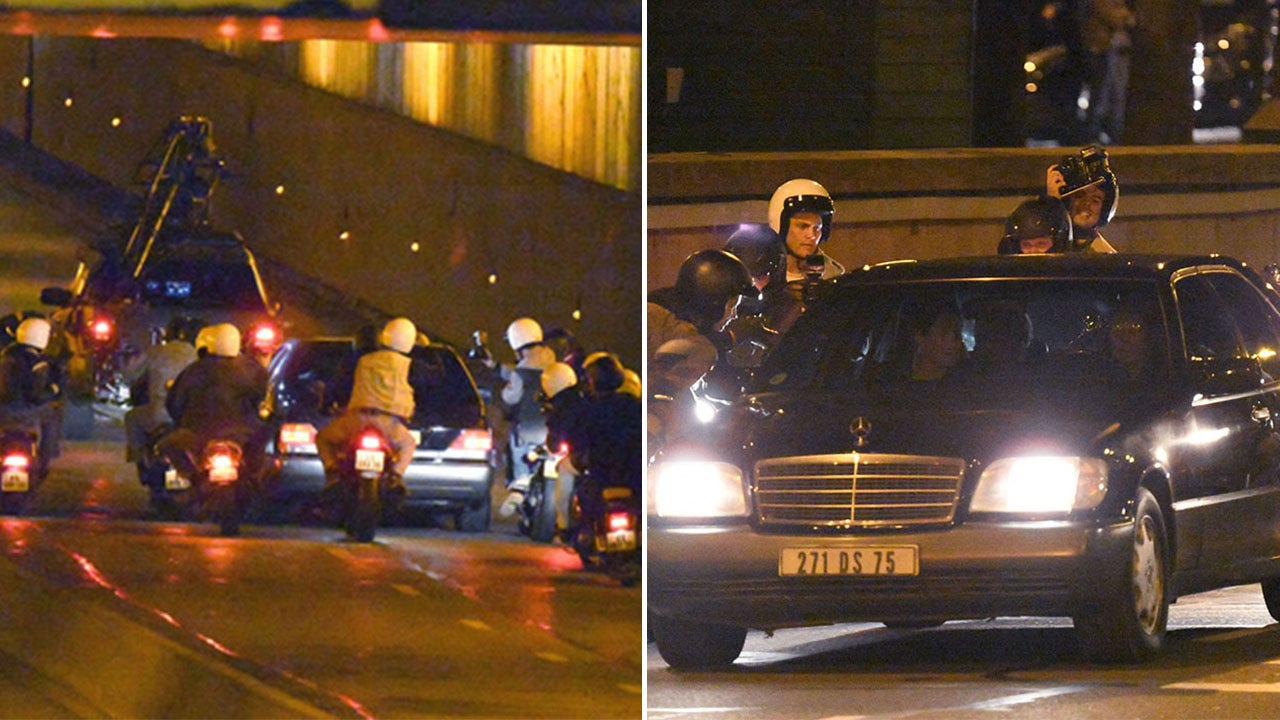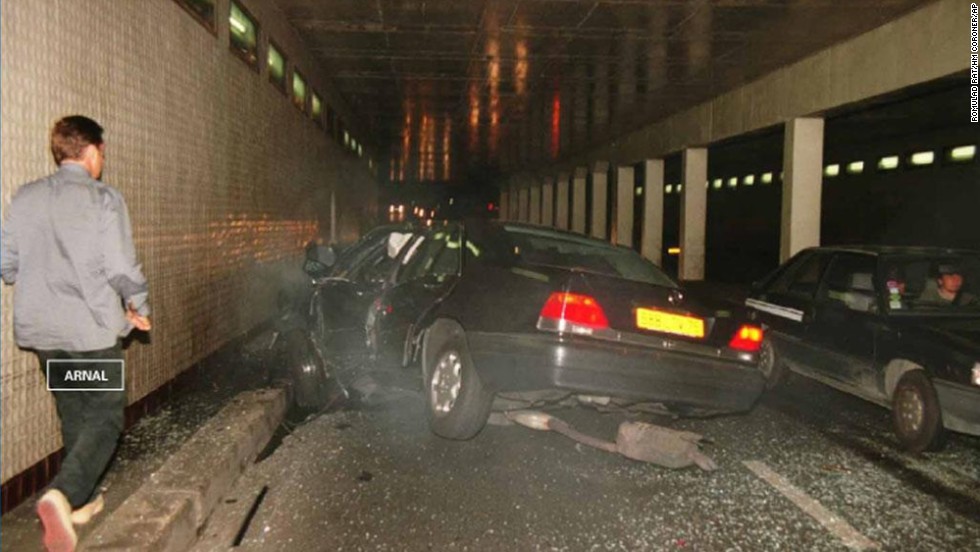Diana Car Crash Images: A Comprehensive Analysis Of The Tragic Event
The tragic car crash involving Princess Diana on August 31, 1997, remains one of the most shocking and devastating events in modern history. The accident, which occurred in the Pont de l'Alma tunnel in Paris, claimed the lives of Diana, her companion Dodi Fayed, and their driver Henri Paul. The images from the scene have been both haunting and controversial, sparking debates about media ethics and privacy.
This incident not only brought the world to a standstill but also raised questions about the paparazzi's role in the tragedy. The relentless pursuit of photographs and the chaotic scene that unfolded afterward have left a lasting impact on public perception of celebrity culture and press conduct.
Understanding the significance of Diana car crash images goes beyond mere curiosity. It involves examining the events leading up to the crash, the aftermath, and the broader implications for society. This article delves into these aspects, offering insights that go beyond surface-level analysis.
Read also:Victorias Secret And Victoria Beckham A Fusion Of Fashion And Glamour
Table of Contents
- Princess Diana's Biography
- Details of the Car Crash
- Impact of Diana Car Crash Images
- The Role of Media and Paparazzi
- Investigation and Findings
- Public Reaction and Legacy
- Ethical Considerations
- Controversies Surrounding the Images
- Legal Actions and Repercussions
- Conclusion
Princess Diana's Biography
Early Life and Career
Princess Diana, born Diana Frances Spencer on July 1, 1961, was a beloved member of the British royal family. She married Prince Charles in 1981, becoming the Princess of Wales. Known for her humanitarian work and approachable nature, Diana captivated the world with her charm and grace.
Personal Details
| Full Name | Diana Frances Spencer |
|---|---|
| Date of Birth | July 1, 1961 |
| Place of Birth | Sandringham, Norfolk, England |
| Spouse | Prince Charles |
| Children | Prince William and Prince Harry |
Details of the Car Crash
The fateful night of August 31, 1997, began with Princess Diana and Dodi Fayed leaving Paris's Ritz Hotel. They were driven by Henri Paul, who was reportedly under the influence of alcohol. The vehicle, a Mercedes-Benz S280, was traveling at high speed, attempting to evade pursuing paparazzi motorcycles.
At approximately 12:25 AM, the car crashed into a concrete pillar in the Pont de l'Alma tunnel. The impact was severe, resulting in fatal injuries for both Diana and Dodi Fayed. Henri Paul also succumbed to his injuries, while bodyguard Trevor Rees-Jones survived with serious injuries.
Impact of Diana Car Crash Images
The images captured from the scene of the crash were both disturbing and controversial. These Diana car crash images showed the wreckage of the vehicle and the immediate aftermath, revealing the chaos and confusion that followed the accident.
- Photographers who arrived at the scene took numerous pictures, some of which were published in media outlets worldwide.
- These images fueled public outrage, leading to discussions about the ethics of photographing tragic events.
- Many questioned whether the photographers prioritized their pursuit of sensational images over offering help to the victims.
The Role of Media and Paparazzi
Pursuit and Responsibility
The role of the media and paparazzi in the events leading up to the crash has been heavily scrutinized. Reports suggest that the relentless pursuit of Princess Diana by photographers may have contributed to the high-speed chase that ultimately led to the accident.
Studies indicate that the pressure to capture exclusive images of celebrities often leads to dangerous situations. According to a report by the BBC, this incident highlighted the need for stricter regulations governing the behavior of paparazzi.
Read also:Elizabeth Hurley Naked Images A Balanced Perspective On Privacy Media And Celebrity Culture
Investigation and Findings
An official investigation into the crash concluded that Henri Paul's intoxication and excessive speed were the primary causes of the accident. The investigation also noted that the pursuing paparazzi motorcycles played a significant role in creating hazardous conditions.
Forensic evidence and witness testimonies supported these findings, reinforcing the importance of responsible driving and media conduct.
Public Reaction and Legacy
The global response to Princess Diana's death was overwhelming. Millions mourned her passing, and tributes poured in from around the world. The Diana car crash images became symbols of grief and anger, prompting calls for change in how the media interacts with public figures.
Her legacy continues to inspire through the charitable foundations she supported, including efforts to combat landmines and promote AIDS awareness.
Ethical Considerations
The ethical implications of capturing and publishing Diana car crash images remain a subject of debate. While some argue that the public has a right to know the details of such significant events, others emphasize the need for sensitivity and respect for the victims' dignity.
According to a study published in the Pew Research Center, ethical guidelines for photojournalism have evolved since the incident, reflecting a growing awareness of the potential harm caused by intrusive coverage.
Controversies Surrounding the Images
Privacy vs. Public Interest
One of the main controversies surrounding Diana car crash images revolves around the balance between privacy and public interest. Critics argue that the publication of graphic images violated the victims' rights, while proponents claim that transparency is essential in understanding the full scope of the tragedy.
Legal challenges and public discourse have since addressed these concerns, leading to more nuanced approaches in handling sensitive material.
Legal Actions and Repercussions
In the aftermath of the crash, several legal actions were taken against the photographers and media outlets involved. Lawsuits were filed, and new regulations were introduced to prevent similar incidents in the future.
These legal measures have had a lasting impact on media practices, encouraging greater accountability and responsibility in reporting on high-profile events.
Conclusion
The tragedy of Princess Diana's car crash and the subsequent release of Diana car crash images have left an indelible mark on society. This article has explored the details of the incident, the role of the media, and the ethical considerations surrounding the coverage of such events.
We invite you to share your thoughts and reflections in the comments section below. Additionally, consider exploring other articles on our site for more insights into historical events and their broader implications. Together, we can foster a more informed and empathetic understanding of the world around us.


